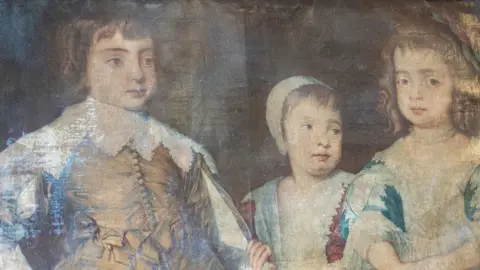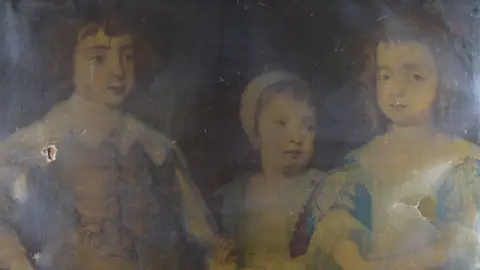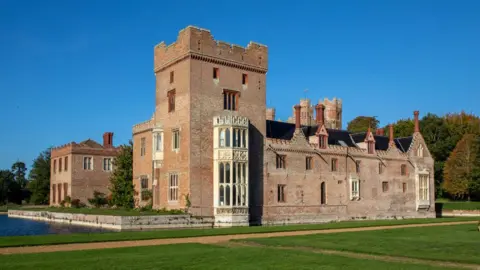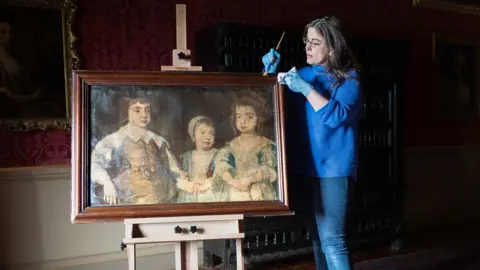Artwork is rare survivor by colour print inventor
 National Trust/Mike Hodgson
National Trust/Mike HodgsonA work of art hidden in a dark corner of a National Trust manor house for 150 years has been revealed as a rare surviving print by the inventor of colour printing.
The copy of a portrait by Dutch artist Sir Anthony van Dyke was assumed to be oil-on-paper until curators at Oxburgh Hall, Norfolk, sent it away for conservation.
It was discovered the reproduction of the Three Eldest Children of Charles I was in fact a print by Jacob Christoff Le Blon, who first created the three-colour printing process.
"Only three Le Blon prints of it are known to survive, so to have discovered a fourth is really exciting," said National Trust curator Jane Eade.
 National Trust/Mike Hodgson
National Trust/Mike HodgsonThe discovery at the home of the Bedingfield family, who were devout Catholics, suggested they were secret Jacobites - supporters of the Catholic Stuart royal family in exile instead of George I.
The Protestant king inherited the British throne in 1714.
The portrait includes the future James II, the last Catholic monarch of Britain, whose son James Francis Edward Stuart attempted to take back the throne in a failed uprising in 1715.
"Copies of this painting are known to have been popular with those sympathetic to the Jacobite cause, and it would have been quite feasible that the print has spent its whole life at Oxburgh - although we lack enough evidence to prove it," said Oxburgh collections and house manager, Ilana van Dort.
 National Trust/Mike Hodgson
National Trust/Mike HodgsonThe original portrait is part of the Royal Collection, to which Le Blon was given access by George I, and his print dates to 1721-22.
He was the first to create a three-colour printing process – the forerunner of the CMYK colour printing used today.
The revolutionary method used mezzotint, a monochrome printmaking process, with separate plates inked in blue, yellow and red, and superimposed on one another in order to create variable depth of hue.
Until Le Blon, artists had inked colours one beside the other on a single printing plate.
 National Trust/Mike Selby
National Trust/Mike SelbyA specialist paper conservator at the trust's Royal Oak Conservation Studio at Knole, Kent, carried out conservation treatment.
Analysis helped identify colours Le Blon was known to have used such as indigo, carmine or red lake.
"A thick layer of 19th Century varnish was particularly challenging," said Ms Eade.
The story of its conservation will feature in the new BBC Two series of Hidden Treasures of the National Trust, which starts on Friday.
 National Trust/Mike Hodgson
National Trust/Mike HodgsonFollow Norfolk news on Facebook, Instagram and X. Got a story? Email [email protected] or WhatsApp us on 0800 169 1830
